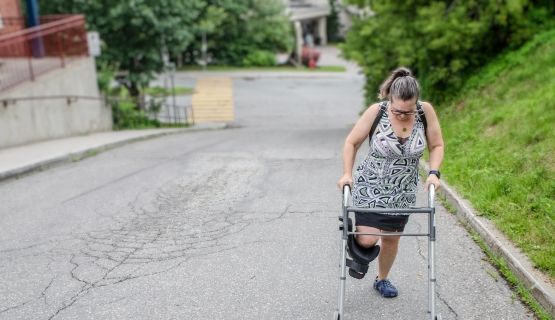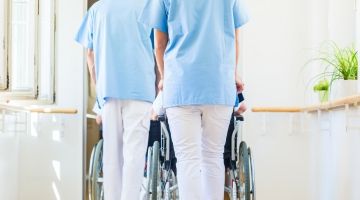Return to work, accommodation and support
IWH has a long history of conducting research on practices, policies and processes that help workers sustainably return to work after an illness or an injury. This page pulls together IWH research and resources on employer supports, job accommodations and modifications, as well as other related issues such as disclosure of disability.
Featured

Research Highlights
Telementoring program addresses return-to-work challenges for Ontario health-care providers
An IWH study has found that Ontario health-care providers face a range of challenges when treating workers with a work-related injury or illness and helping them return to work—a telementoring program called ECHO Occupational Environmental Medicine helped providers overcome some of these challenges.
Published: July 8, 2025

At Work article
Injured workers face mental health challenges beyond diagnosable conditions
Workers with a work-related physical injury that takes them off the job can have a wide range of mental health experiences, beyond diagnosable conditions. That’s according to an IWH study which also found that differences in injured workers’ mental health were linked to return-to-work outcomes.
Published: April 9, 2025
Project report
Project report
Role of health-care providers in the workers' compensation system and the return-to-work process: final report
Health-care providers play an important role in the return to work of injured workers, yet research suggests they sometimes struggle with this responsibility. This report shares the findings of a study on health-care providers' experiences in return to work and in working with workers' compensation systems. It also suggests practices and policies that may help clarify the role of health-care providers and make workers’ compensation systems easier to navigate for all stakeholders.
Published: December 2016
IWH Speaker Series
IWH Speaker Series
Life course concepts in the work experiences of people with arthritis
Arthritis is one of the most common causes of work disability in Canada. Among those with arthritis, three in five are in their working years (ages 18 to 65 years). Yet, little research has looked into the work experiences of young and middle-aged adults with arthritis. In this plenary, Dr. Arif Jetha shares his research examining the impact of important life transitions on the work experiences of young, middle-aged and older adults with arthritis.
Published: November 2016
Journal article
Journal article
Implementing a collaborative return-to-work program: lessons from a qualitative study in a large Canadian healthcare organization
Published: Work, November 2016
At Work article
Advocate and pioneer challenges all to erase stigma faced by workers with disabilities
IWH Nachemson lecture celebrates Wolfgang Zimmermann's decades-long commitment to improving the lives of injured workers and people with disabilities.
Published: November 2016
IWH Speaker Series
IWH Speaker Series
What are physicians told about their role in return to work?
Physicians have an important role in the return to work (RTW) process, but research shows that they sometimes struggle to manage RTW consultations and help patients return to work after an injury. As part of a broader exploration into the role played by doctors in RTW, an IWH team led by Dr. Agnieszka Kosny sought to examine resources, policies and guidelines that have been developed for physicians by workers’ compensation boards, governments and other organizations across Canada. In this plenary, Kosny highlights resource gaps that may hinder physicians’ understanding of their roles and responsibilities in the workers' compensation system and RTW process, and which may ultimately delay workers’ RTW after injury.
Published: November 2016

At Work article
Disability leave duration rises with age, chronic conditions
The relationship between age and days on disability changes with different chronic conditions.
Published: August 2016

At Work article
Key differences found in return-to-work process for MSD and psychological claims
Research comparing MSD and mental health compensation claims in Australia offers a picture of return-to-work challenges for psychological conditions.
Published: August 2016

At Work article
Monitoring progress key in implementing return-to-work program: IWH study
A workplace study of an innovative return-to-work program highlights progress and opportunities for improvement.
Published: April 2016

IWH in the media
Study looks at relationship between employers and doctors in return to work
A key element of a successful return to work is a good, communicative relationship among the injured worker, the employer and the worker’s doctors. But a study found the relationship between employers and doctors can be marred by mistrust and lack of communication.
Published: OHS Insider, April 2016

At Work article
Depressive symptoms common in first 12 months after work injury
A follow-up study by the Institute for Work & Health finds depressive symptoms at six months after work-related injury are a signal that poor mental health may persist at 12 months.
Published: February 2016